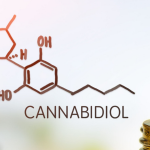Castor Oil: Magic or Myth (Part 3)
Vis Medicatrix Naturae
Marisol Teijeiro, ND
Many ancient cultures share a tradition of using castor oil for beautification. In the modern day, the prevalence of castor oil in beauty care kits is notable, and the science is there to support it.
Since beauty is, in part, a reflection of being healthy, it’s no surprise that an oil that has so many external applications also has internal health benefits (which in turn benefits our outer appearance). In what ways does castor oil apply to ocular, dermal, and oral cosmetic care? These are all areas that, as a society, we typically focus on and want to look beautiful, and when they look and feel beautiful, we consequently feel better.
The History of Castor Oil for Beauty
From the earliest of ages, before Christ (BC), castor oil was used in beautifying practices, such as Egyptian mummification methods1 as a form of preservation. The oil was loved by Cleopatra, Roman Empresses, and Greek Mediterranean beauties. Even the medicine men of the time, such as Hippocrates and Galen,2 believed in its ability to bring out the best in the eyes, skin, hair, nails, and oral health.
Looking for Beauty
The search for beautifying practices has always been a part of our cultural evolution, and the eyes have always been a focal point, not only to see beauty, but to look beautiful as well. The eyes are, after all, the window into our soul.
A known cue of increasing age is a change of color in the sclera. Reddening and yellowing are common indicators of the aging process.3 For the historical beauty Cleopatra, it is said her main use of castor oil was to brighten the whites of her eyes. It was her form of anti-aging treatment.

Its mechanism of action in the eye is unknown; however, from the ocular research on castor oil, we can hypothesize some of its effects. It has been shown to effectively reduce dryness of the eye in patients with Meibomian gland dysfunction.4 In an animal study, castor oil was shown to reduce glutathione losses in the extracted lenses of rats.5 Some experts have suggested that in cases of conjunctivitis, where reddening of the eye is a notable symptom, a solution with 2% cyclosporine in castor oil might be a useful alternative treatment.6 Although castor oil functions as a carrier oil in this situation, it probably also contributes anti-inflammatory7 and nitric-oxide-promoting effects.8 Naturopathic doctors are privy to the benefits of castor oil in the eyes for age-related declines.9
The Egyptian Ebers Papyrus discussed the use of castor oil as early as 1550 BC,10 and Egyptians aren’t the only ones. In southern India, castor oil is a traditional remedy for the health and beauty of the eyes, including the cornea,11 and many other cultures have both similar and unique traditional usages of the oil.12
Affairs of the Hair
Another well-known traditional use of castor oil is for the health and beauty of hair on the head, eyebrows, and eyelashes.
For centuries, castor oil has been the go-to for treatment for alopecia and male-pattern baldness; however, there is no direct evidence in the literature as to why or how it works. We only know about the hair growth benefits of castor oil from hearsay, people’s personal accounts of their experience with the oil, and cultural traditions. I have yet to find even 1 study that proves it, yet I have found many people who swear by it. Castor oil is commonly combined with rosemary essential oil for this purpose, possibly because of rosemary’s antiseptic, antioxidant, and blood-circulating properties.13,14 Those that use it are convinced that it works.

The people of Myanmar have honored castor oil for hair thickening, but also for nail and skin health; they consider castor oil to be a queen of oils for all of these purposes.15
In Jamaica, the castor bean plant was brought over by the slave trade. Castor oil is cooked and burned to create Jamaican black castor oil, which is their traditional oil of choice for hair and beauty practices.16 This product is becoming popularized here in North America, too. However, it is this author’s impression that since it is an oil and that there are components of the oil, such as triglyceride chains of linoleic (omega-6) and oleic (omega-9) acids, that have low burning-points, the black color and burnt smell is likely created by products of oxidation, in which case the oil would be in a rancid form. Consumption is consumption, whether topical or oral. It is not recommended that oxidized fats be ingested, as they are potential carcinogens.17
Castor oil is beneficial for those who suffer with dandruff, which is often caused by a species of fungus known as Malassezia. Nitric oxide donors such as castor oil18 have known antifungal activity.19 Thus, castor oil can enhance hair health among those that suffer from dandruff caused by fungus. Over time, long-term dandruff causes a thickening and scarring of the epidermis,20 making it problematic for most oils to be used as a scalp treatment. Castor oil, in contrast, is able to penetrate the epidermis, thereby feeding and nourishing the hair follicles as well as increasing circulation to the area. It serves as an excellent ally.
In clinical practice, I have seen improvements in the thickness of hair, eyebrows, and eyelashes, but, more importantly, prevent further hair loss in male-pattern baldness. I typically advise men to use it almost like a hair gel. It’s great if they can shave their head down to the wood, so to speak, and apply castor oil daily. For women, a weekly conditioning castor oil treatment can be used for a few hours (or worn to bed). For eyelashes and eyebrows, it can be applied nightly with an applicator brush, and for best results can be worn to bed with an organic cotton eye-mask.
Skin So Soft
It is hypothesized that the chemical structure of castor oil – rich in polyphenols, essential fats, and many other nourishing components – is one of the reasons it is so beneficial to the hair and nails. This is also true for its effect on the skin.
When it comes to matters of the skin, there is often an immune component involved, such as in psoriasis, eczema, dermatitis, fungal irritation, or viral warts. Inflammation predominates, pruritus is often observed, and changes in the epidermal layer are common.

In various animal models, castor oil was compared to capsaicin and was shown to be an excellent anti-inflammatory that reduces edema without the rubefacient effect.7 It also reduced substance P, which would be advantageous in skin conditions involving pain.7
A usage of castor oil in conventional medicine is to care for radiation-induced dermatitis – the ultimate insult to the skin, which typically includes epidermal changes, scarring, and irritation. Hydrogenated castor oil is combined with other ingredients in a topical ointment, serving as an emollient and epidermal builder in the formula.21
Skin Protocols from my Practice
Here are some of the castor oil protocols that I recommend in my own clinic for common skin conditions:
- Acne: A castor oil face wash
- Use a steamed cloth on the face to open pores
- Place a dollop of castor oil in the palm of clean hands
- Blot castor oil all over the face
- Use the damp steamed cloth to wipe off excess oil
- Use extra castor oil around the eyes to remove eye makeup (if needed)
- Dry or wet eczema and psoriasis: Topical application
- Simply use clean hands to apply castor oil to affected area of the skin
- Fungal infections and warts: Used as a paste
- In a glass container, combine baking soda, castor oil, and a drop of tea tree essential oil
- Mix ingredients together to form a paste
- Apply the paste to affected skin
Castor oil is an incredibly versatile oil that can be used in many different ways. Always take care, though, when using it around fabrics, as it will stain.
Oral Vitality
A warm, beautiful smile speaks a thousand words. As we age, our smile ages with us. Yellowing or missing teeth, receding gums, and cavities are all classic signs of aging.

Oral health is important for various reasons. The microbiome of the body begins in the mouth, and the health or lack of health in our oral cavity can affect our entire body. Oral health is directly related to heart health.22 Oral health also correlates with the health of the lungs.23
The ancient practice of oil pulling has been used for centuries to clean the mouth. Toxins are said to travel in fat because they are lipophilic. Castor oil’s unique chemical structure makes it a magnet for toxins. In the mouth, castor oil – as compared to old traditional methods of oil pulling with coconut oil and sesame oil – requires less time and less oil; while 20 minutes of swishing with 1-2 tablespoons of coconut oil or sesame oil are required, only 1-2 minutes and 1-2 teaspoons of castor oil are needed.
Castor oil may be quite useful in periodontal disease. Research has demonstrated the ability of castor oil to break down oral biofilm, a protective barrier created by detrimental bacteria in the microbiome.24-26 This makes it easier to eradicate “bad” bacteria, and renders the environment more hospitable to healthy bacteria. Castor oil also helps with reduction of inflammation7 of the gums, and with circulation via nitric oxide,18 which may beneficial to gum health when used for oil pulling. This is an easy practice to add to your nighttime routine, before or after brushing your teeth. Swoosh with purpose, for 1-2 minutes, and spit. Repeat daily.
Castor Oil Concerns
Allergy to Castor Oil?
Castor oil is generally well tolerated in dermatological medicine. The castor bean, on the other hand, is known to cause allergy, anaphylaxis, and possibly death27 due to the toxic lectin present in the plant, known as ricin. There is NO ricin in castor oil. Hypersensitivity reactions to castor oil, resembling dermatitis,28 are a rare occurrence and typically only occur in combination with other ingredients.29 Such a reaction is simply treated with cessation of usage of castor oil.
Toxicity from Castor Oil?
To repeat, castor oil does not contain the toxic substance ricin. This lectin has the ability to be lethal within 6 hours of consumption, and has been used in biological warfare. Ricin is only found in the meal of the castor bean, and not in castor oil itself.
Quality of Castor Oil?
For cosmetic purposes, the ideal castor oil should be 100% pure, hexane-free, cold-pressed, organic, extra-virgin and sold in a glass bottle. If castor oil is bottled in plastic, the potential of the oil to absorb slip agents,30 UV filters,31 bisphenol A32 or a number of other toxic components of plastic, is high. These substances have detrimental effects on the regulatory systems of the body.
Also make sure you purchase the oil from a source you trust, as many bulk manufacturers are selling “refined” castor oil, which is often used as a cheaper alternative to the cold-pressed, hexane-free, extra-virgin oil. When refined, the oil loses many of its nourishing components.
So, there you have it – not only is castor oil a versatile tool in your pharmaceutical cabinet; it also has a well-deserved place in your beauty regime, too!
Financial Disclosures: Dr Marisol Teijeiro is a naturopathic doctor and has a financial interest in Queen of the Thrones Inc™ – creators of castor oil packs, products, and online education.
Read part 2 here
Read part 1 here
References:
- Tchapla A, Méjanelle P, Bleton J, Goursaud S. Characterisation of embalming materials of a mummy of the Ptolemaic era. Comparison with balms from mummies of different eras. J Sep Sci. 2004;27(3):217-234.
- Lukong KE. Understanding breast cancer – The long and winding road. BBA Clin. 2017;7:64-77.
- Russell R, Sweda JR, Porcheron A, Mauger E. Sclera color changes with age and is a cue for perceiving age, health, and beauty. Psychol Aging. 2014;29(3):626-635.
- Goto E, Shimazaki J, Monden Y, et al. Low-concentration homogenized castor oil eye drops for noninflamed obstructive meibomian gland dysfunction. Ophthalmology. 2002;109(11):2030-2035.
- Holm T, Brøgger-Jensen MR, Johnson L, Kessel L. Glutathione preservation during storage of rat lenses in optisol-GS and castor oil. PLoS One.2013;8(11):e79620.
- Bonini S, Coassin M, Aronni S, Lambiase A. Vernal keratoconjunctivitis. Eye (Lond). 2004;18(4):345-351.
- Vieira C, Evangelista S, Cirillo R, et al. Effect of ricinoleic acid in acute and subchronic experimental models of inflammation. Mediators Inflamm. 2000;9(5):223-228.
- Izzo A. Castor oil: An update on mechanism of action. Phytotherapy Res. 1996;10:S109-S111.
- Fu M, Brusewitz J. Castor Oil & Age-Related Cataract. NDNR. 2018;14(5):1,8-9. Available at: https://ndnr.com/anti-aging/castor-oil-age-related-cataract-a-case-for-the-therapeutic-order/. Accessed June 28, 2019.
- Franke H, Scholl R, Aigner A. Ricin and Ricinus communis in pharmacology and toxicology-from ancient use and “Papyrus Ebers” to modern perspectives and “poisonous plant of the year 2018”. Naunyn Schmiedebergs Arch Pharmacol. 2019;392(10):1181-1208.
- Prajna NV, Pillai MR, Manimegalai TK, Srinivasan M. Use of Traditional Eye Medicines by corneal ulcer patients presenting to a hospital in South India. Indian J Ophthalmol. 1999;47(1):15-18.
- Marwat SK, Rehman F, Khan EA, et al. Review – Ricinus communis – Ethnomedicinal uses and pharmacological activities. Pak J Pharm Sci. 2017;30(5):1815-1827.
- Nabavi SF, Tenore GC, Daglia M, et al. The cellular protective effects of rosmarinic acid: from bench to bedside. Curr Neurovasc Res. 2015;12(1):98-105.
- Nunes S, Madureira AR, Campos D, et al. Therapeutic and nutraceutical potential of rosmarinic acid-Cytoprotective properties and pharmacokinetic profile. Crit Rev Food Sci Nutr. 2017;57(9):1799-1806.
- DeFilipps RA, Krupnick GA. The medicinal plants of Myanmar. PhytoKeys. 2018;(102):1-341.
- Wong-Shing K. Why You Should Use Jaimaican Black Castor Oil for Hair Growth. June 19, 2019. Available at: https://www.naturallycurly.com/curlreading/curls/jamaican-black-castor-oil-for-hair-growth. Accessed September 24, 2019.
- Perjési P, Pintér Z, Gyöngyi Z, Ember I. Effect of rancid corn oil on some onco/suppressor gene expressions in vivo. A short-term study. Anticancer Res. 2002;22(1A):225-230.
- Mascolo N, Izzo AA, Autore G, et al. Nitric oxide and castor oil-induced diarrhea. J Pharmacol Exp Ther. 1994;268(1):291-295.
- Stasko N, McHale K, Hollenbach SJ, et al. Nitric Oxide-Releasing Macromolecule Exhibits Broad-Spectrum Antifungal Activity and Utility as a Topical Treatment for Superficial Fungal Infections. Antimicrob Agents Chemother. 2018;62(7). pii: e01026-17. doi: 10.1128/AAC.01026-17.
- Pople JE, Bhogal RK, Moore AE, Jenkins G. Changes in epidermal morphology associated with dandruff. Int J Cosmet Sci. 2019;41(4):357-363.
- McDougall CJ, Franklin LE, Gresle SO. Management of radiation dermatitis in a patient after mastectomy. J Wound Ostomy Continence Nurs. 2005;32(5):337-339; discussion 339-340.
- Mathews MJ, Mathews EH, Mathews GE. Oral health and coronary heart disease. BMC Oral Health. 2016;16(1):122.
- Manger D, Walshaw M, Fitzgerald R, et al. Evidence summary: the relationship between oral health and pulmonary disease. Dent J. 2017;222(7):527-533.
- Andrade IM, Andrade KM, Pisani MX, et al. Trial of an experimental castor oil solution for cleaning dentures. Braz Dent J. 2014;25(1):43-47.
- Badaró MM, Salles MM, Leite VMF, et al. Clinical trial for evaluation of Ricinus communis and sodium hypochlorite as denture cleanser. J Appl Oral Sci. 2017;25(3):324-334.
- Salles MM, Badaró MM, Arruda CN, et al. Antimicrobial activity of complete denture cleanser solutions based on sodium hypochlorite and Ricinus communis – a randomized clinical study. J Appl Oral Sci. 2015;23(6):637-642.
- Coattrenec Y, Jaques D, Jandus P, et al. Anaphylactic shock following castor bean contact: a case report. Allergy Asthma Clin Immunol. 2017;13:50.
- Brandle I, Boujnah-Khouadja A, Foussereau J. Allergy to castor oil. Contact Dermatitis. 1983;9(5):424-425.
- Lodi A, Leuchi S, Mancini L, et al. Allergy to castor oil and colophony in a wart remover. Contact Dermatitis. 1992;26(4):266-267.
- Kim H, Oh S, Gye MC, Shin I. Comparative toxicological evaluation of nonylphenol and nonylphenol polyethoxylates using human keratinocytes. Drug Chem Toxicol. 2018;41(4):486-491.
- Amar SK, Goyal S, Srivastav AK, et al. Combined effect of Benzophenone-2 and ultraviolet radiation promote photogenotoxicity and photocytotoxicity in human keratinocytes. Regul Toxicol Pharmacol. 2018;95:298-306.
- Hafezi SA, Abdel-Rahman WM.The Endocrine Disruptor Bisphenol A (BPA) Exerts a Wide Range of Effects in Carcinogenesis and Response to Therapy. Curr Mol Pharmacol. 2019 Mar 6. doi: 10.2174/1874467212666190306164507. [Epub ahead of print]
 Marisol Teijeiro, ND, is the director of Sanas Health Practice, in Petersburg, Ontario. Her focus is on cleansing and gut health, and she’s appropriately been dubbed the Queen of the Thrones™ by her patients as she’s helped thousands overcome digestive issues and take control of their toilet troubles. She has spearheaded the Queen of the Thrones™ line of lifestyle entrainment products that includes an easy, mess-less castor oil pack and castor oil in a glass bottle. Dr Marisol speaks internationally at educational conferences for practitioners, teaches a course on castor oil at CCNM, and will be releasing her debut guide book on digestive health, Oh Sh*t, later this year.
Marisol Teijeiro, ND, is the director of Sanas Health Practice, in Petersburg, Ontario. Her focus is on cleansing and gut health, and she’s appropriately been dubbed the Queen of the Thrones™ by her patients as she’s helped thousands overcome digestive issues and take control of their toilet troubles. She has spearheaded the Queen of the Thrones™ line of lifestyle entrainment products that includes an easy, mess-less castor oil pack and castor oil in a glass bottle. Dr Marisol speaks internationally at educational conferences for practitioners, teaches a course on castor oil at CCNM, and will be releasing her debut guide book on digestive health, Oh Sh*t, later this year.










